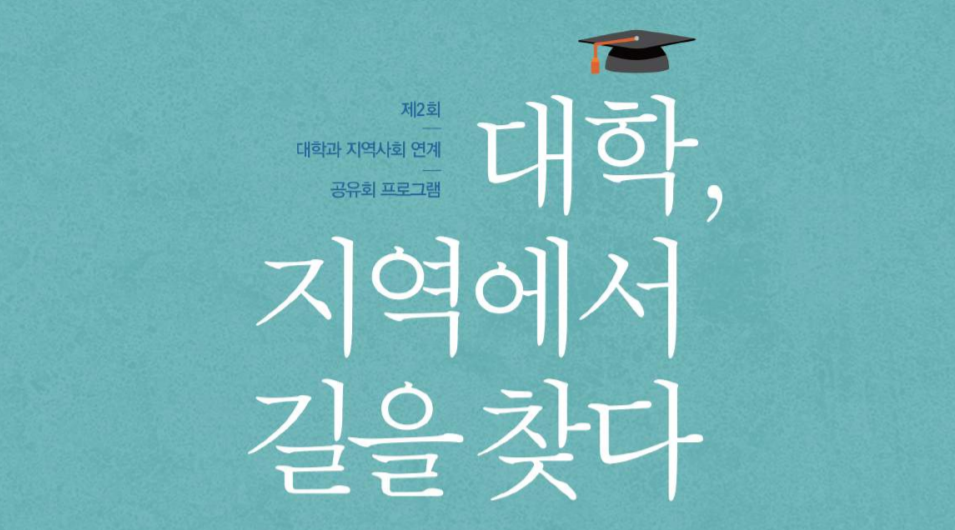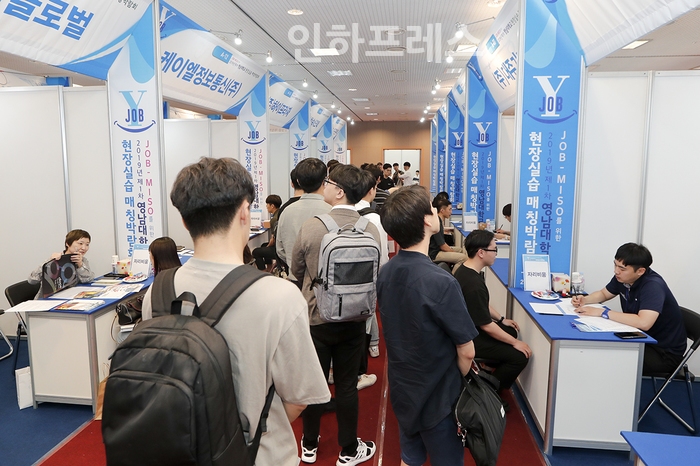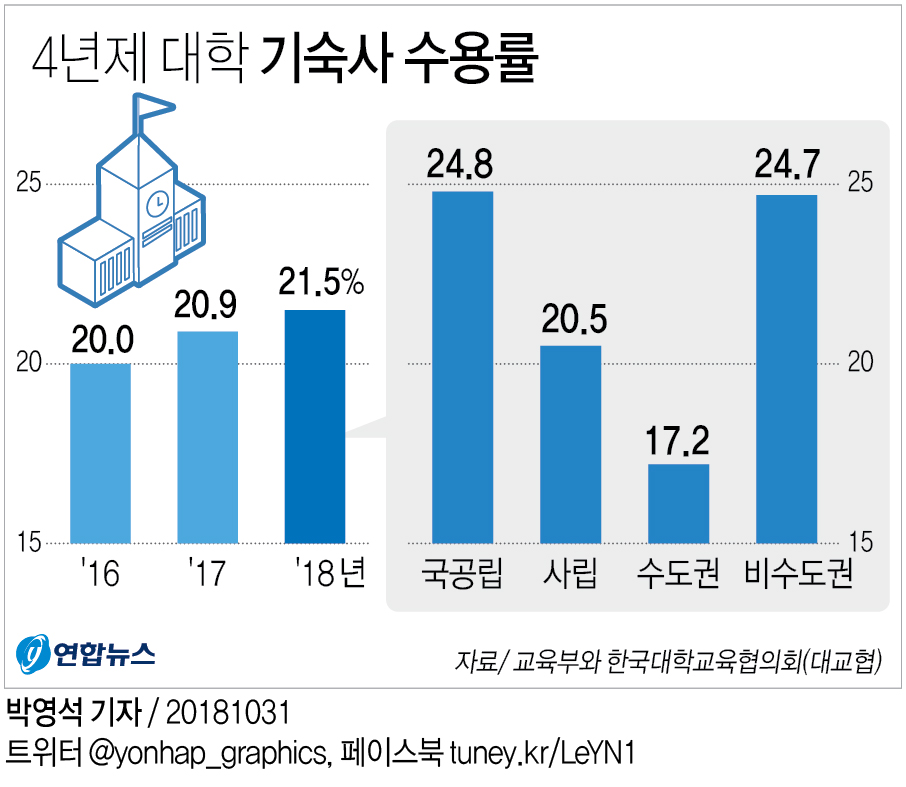 |
Universities and local communities are more deeply related than you might think. They affect each other as closely as they are. Recently, we have been trying to understand their relationship and create reciprocal benefits through collaboration. Now let's look at what universities and communities are doing and what programs are going on.
Relationship between universities and local communities
Universities and their local communities have a massive impact on each other. Universities employ local citizens; students are major customers of local commerce; university members participate in local industry R&D (research and development), also universities play a role of a school for the local citizens. With this, the university has the potential to solve problems that local communities have and to contribute to the residents' welfare. Also, professors and students can gain practical knowledge and experience while solving complex social problems and helping local communities. Furthermore, the residents' quality of life is increased through the university’s contribution of activities like volunteering and lifelong education. Here is a typical example at Inha University. There was a creative information and communication engineering design class in the second semester of 2019. In the class, students worked on a project that studied ways to improve parking problems in Michuhol-gu and to give a presentation as a midterm test. After that, they delivered the results to the concerned people. Now let`s look at specific programs.
The first specific program is ‘Campus town.’ Until 2020, the Seoul government has spent 41 billion won to implement Campus towns in 52 Universities which are located in Seoul. This program is designed to solve local recession and the problems of young people like the shortage of jobs and insecure housing. The Seoul government is providing opportunities for young people to have start-up businesses. This will lead to a rehabilitation of the local economy by developing and reactivating local culture and businesses. The OSCAR Campus town at Seoul University is a suitable case. OSCAR is an acronym of OPEN, SHARE, COLLABORATION, ACTIVATION, REPRODUCTION. Gwanak-gu and Seoul University are making the local area into a start-up center and have been running a program called Co-working nokdu.zip since 2017. In the program, they provide workspace and expert education in fields such as making movies and taking photos that can help the start-ups of young entrepreneurs. Park Joon hee, chief of Gwanak-gu Office said that “we will become a role model by coexisting with universities and local communities like Silicon Valley in the U.S. or Zhong Guan Cun in China.”
The second program is ‘Link plus.’ Link plus started with the concept of universities and local corporations collaborating to educate the students and to develop technologies that they need in the field. Furthermore, their goal is to create and spread a leading model for industry-academic cooperation. For this purpose, the Department of Education will provide 3.8 billion won to 55 Universities over the five years from 2017 to 2021. This allows universities and local corporations to collaborate in various fields, especially in the humanities, social fields, cultural fields, the arts, as well as other contents and services. Also, universities and companies will run highly interconnected curricula to ensure that students get jobs, and the company can secure the talents of workers who have the appropriate abilities by running contract departments. Universities and companies will paticipate in making contract departments by screening students, making curriculum, developing textbooks and opening lectures by corporate personnel. For example, Gyeongsang National University has been running a contract department called Electrical Energy Engineering with Korea, a power resource generator company, Southern Power Cooperation since 2017. The company staff members who graduated from high school enter the department as freshmen and as transfer students. They get experience in the field and learn theoretical content at the university. They learn not only electrical engineering but also various other subjects such as law, English and Chinese writing at the same time. With this curriculum, they become a professional engineers.
Universities and local communities collaborate in Korea
The first theme is an example of Campus Town. Sookmyung Women's University has operated a local friendly program such as a student idea contest and the Rang Rang program to revitalize the nearby Yongmun traditional market as a part of their Campus town. In 2018, 99 teams made up of 245 students participated in the ‘Value up! Together up!’ contest. This contest was held with the theme of a practical item to promote the Yongmun traditional market. In the contest, fabulous ideas like making a smartphone application, composing a jingle for advertisement and writing Yong Yong prose came out. Yong Yong prose was made for promoting the Yongmun market by student supporters who wrote a variety of contents. Also, there was an event called the Rang Rang program which only students plan and operate. The concept of the Rang Rang program is a local market visiting day with the whole family. On September 15, 2019, the Rang Rang program was held with the theme of the Yongmun market Festival with Hongbu and Nolbu. About 1,500 people visited the festival where various programs were carried out, including a puppet show with scenes excerpted from Hongbu and Nolbu, performances, cookie making experiences, and face painting. The ‘B: BREATH’ team who planned the event said “Our goal was to create a place where people can easily visit, so they can enjoy the event and look around. In the end, we hope it leads to an increase in sales in the traditional market and an influx of new customers.”
 |
Secondly is another example of ‘Link plus’ hold at Yeungnam University. Yeungnam University has implemented its CDP (Capstone Design Project) as part of ‘Link plus" from 2017 to 2022. CDP is a design subject in which students experience the entire process of planning, designing, and producing a piece based on theories. Through this, students acquire creativity and efficiency which are needed in the field. Professors, students, and companies team up to solve the problems the industry confronts. As a result, companies can solve their problems, and students can get development experience. Also, the field experience center holds the field experience matching fair and opens a competition for best practices. Twenty-five companies, including KT&G and Kyungpook Institute of Ocean Biotechnology, took part in the field experience matching fair held in 2019. Anyone interested in field experience and recruitment information of participating companies could take part in consulting and be selected after meeting. Yeungnam University students who attended field experience at the Kyungpook Institute of Ocean Biotechnology in 2019 said that they had anxiety ahead of graduation, but field experience was a two-month opportunity to set their goals and know what to do.
 |
Lastly, Inha University operates programs for the local communities. Inha University has been running JEP, a community-linked volunteer program, since 2015. JEP is an acronym of JOINT EDUCATIONAL PROJECT and is a volunteer program that teaches regular curriculum in conjunction with community service, expands the scope of knowledge acquisition and provides opportunities to apply theory to reality. To participate in JEP, you should apply for the course during the course application period and complete the application form only for those who wish to participate in the orientation. Students take part in volunteer activities regularly outside of class. Students who complete JEP will receive 3 credits for their major subjects and 1 credit for the subject ‘JEP for community service’. In 2019, students participated in a project that translated the guidelines and menus of Chinatown and restaurant on Wolmido into English in line with the growing number of foreign tourists visiting the city of Incheon. The project was conducted by the Department of English studies and the Incheon Metropolitan City Regeneration Content Division. Various departments also participated in volunteer activities to suit their characteristics. For example, students worked out volunteer activities at Incheon Jung-gu Mental Health and Welfare Center with the Nursing Department and also did volunteer work in Free Park for the Culture and Tourism Festival with the Department of Cultural Content. Another program that operated at Inha University is a local language learning program. Inha University's Korean Language and Culture Center have been running the youth Korean language training program for local high school students since 2012. The 8th semester was completed in 2019. During the summer vacation, the Korean Language and Culture Center gave 50 to 80 high school students in Incheon lectures on education programs such as decent Korean and accurate Korean and conducted a survey and discussion on language issues such as wrongly used nuances for students and sub-Korean.
Also, they operate a “visiting Korean Language and Culture School,” which provides standard language rules and lectures on how to spell Korean in everyday life. The Korean Language and Culture School, begun in 2019, was attended by 850 people visiting 19 institutions including the Gyeyang District Office and Yeongjong Library in Incheon.
The limitations of universities and local communities’ collaboration
Ewha Women's University started Ewha 52nd Street. To be specific, they turned empty stores in nearby university districts into places for start-ups. After 2 years, however, only 5 of the 22 stores remain. It seems that Ewha 52nd street failed. There are two reasons it failed: too brief a period of support and a lack of individual preparation. The period of support was only one year, but it takes more than a year for the effectiveness of the support to come out. Ms. B, who participated in the project, said, ‘It took about two months for customers to recognize the store, and except for summer and winter vacations, the actual work time is too short. This is not enough time to settle down.’ Some people presume that start-up support is only once and does not need to be maintained. They think it is not helpful at all. Also, they point out entrepreneurs who rely solely on the support. Professor Nam Ki Bum of the Department of Urban Social Studies at the University of Seoul was interviewed by Myung Dae newspaper. He said, “It is a big problem that startups cannot be maintained without support and that they quit when it stops.” In another case, there is a conflict between universities and residents.
Universities, where students come from all over the country, try to expand their dormitories for the convenience of students. Students say dormitories should be expanded to solve housing problems, but nearby residents are against this for several reasons. Residents in areas that carry out rental businesses strongly oppose the construction of additional dormitories, claiming that it would cause income problems due to a drop in demand for rental space, which would infringe on their right to survive. In 2016, the joint dormitory named ‘Happiness dormitory’ built in Seongdong-gu of the Korea Scholarship Foundation was canceled due to opposition from nearby residents. Also, Korea University pushed for the construction of a happiness dormitory in 2015 to solve students’ housing problems, but it failed for the same reason. One Korea University students said, 'I think it is a matter of educational rights, not just the right to live in a boarding house and to go to school comfortably.'
 |
Overseas case of universities and local communities’ collaboration
Overseas, universities and communities are actively interacting with each other, knowing the role and value of universities in cities.
Similar problems have been occurring in Japan, like the aging population, the decrease in the school-age population, and declining cities, just like in Korea. Japan conducted a social contribution support project to solve these problems. As a result, they began COC with universities in 2013. The COC which means the Center Of Communities tries to create the university as a hub for regional regeneration and revitalization. Since March 2014, Yokohama City University has actively invested in community contribution projects by operating the Namiki Urban Design Center to provide space for residents and develop areas on the outskirts of Yokohama. In this way, residents hold health lectures and computer lectures by themselves. And students can learn from experience. They spent three nights and four days researching the town in Namiki as part of a village-making class. Students made suggestions such as ‘Let’s develop green land as a resting place’ and ‘Let’s make trails that connect industrial areas and residential areas’. The Namiki center, which is engaged in local contribution activities, think about how to keep the center running after the COC support project is over. Finally, they plan the Asita (tomorrow) project to operate a sustainable center. It is difficult to prepare a separate budget for the operation of the center continuously at the university. Therefore, they organized the center with local industries such as Yokohama Housing Corporation and Keikyu Subway Corporation. They are working to develop community participation projects through the Asita project and to work together with various companies and organizations in the community to develop the self-sustaining power of the region.
In the U.S. there is focus on ensuring that universities and local communities continue to work together for regional regeneration. The University of Pennsylvania in the U.S. was in serious conflict with surrounding communities, and its downtown area had declined, including a decrease in population and a collapse of the local economy. As a result there was an increase in crime rates. In the end, the university launched the West Philadelphia Initiative (WPI) to solve the distrust, conflict and security issues with the community. They planned a regeneration strategy for the town with ample conversation and cooperation with local communities and if there were existing earlier plans, they tried to apply them. Rather than making a big announcement, they communicated with residents and implemented it gradually to create substantial results without giving unnecessary concerns or excessive expectations. For distance, one of the plans to improve community services is ‘University City Brite’, installing streetlamps to prevent crime. The University of Pennsylvania put the construction process in the hands of local companies and made efforts to recruit residents first. During the WPI's activities, the number of reported crimes in the public safety center decreased by about 40%, and the number of pedestrians visiting commercial streets increased by 86 percent, showing noticeable achievements and revitalizing the local commercial area. As the crime rate has risen since then, they continued to work to solve problems such as installing CCTVs, expanding evening patrols, and adding streetlights. The University of Pennsylvania subcontracted with local companies to install streetlamps and made efforts to recruit local residents preferentially. During the period of WPI, the crime rate in the public security center decreased by about 40%, and pedestrians who visited the commercial area increased by about 86%. It was a marvelous output.
Now, it is essential that there be collaboration between universities and communities. If collaboration goes well, we can expect positive effects in both local communities and students. Inha University as a representative of Incheon collaborates with Incheon by a variety of programs. Through this, we hope to be in a relationship in which we help each other.
안찬현 12173396@inha.edu
<저작권자 © 인하프레스, 무단 전재 및 재배포 금지>

![[보도] 제43대 총학생회 후보자 공청회 개최돼](/news/photo/202404/11686_5015_2626.png) [보도] 제43대 총학생회 후보자 공청회 개최돼
[보도] 제43대 총학생회 후보자 공청회 개최돼
![[보도] 제43대 총학생회 후보자 공청회 개최돼](/news/thumbnail/202404/11686_5015_2626_v150.jpg)
![[보도] 총학생회장 선거 열려···학생사회 대표자는?](/news/thumbnail/202403/11668_5014_266_v150.jpg)
![[보도] 무전공·계열제 논의···학생은 어디에?](/news/thumbnail/202403/11666_5011_2238_v150.jpg)
![[보도] 인하 70돌, 다양한 행사 이어져](/news/thumbnail/202403/11663_5009_165_v150.jpg)
